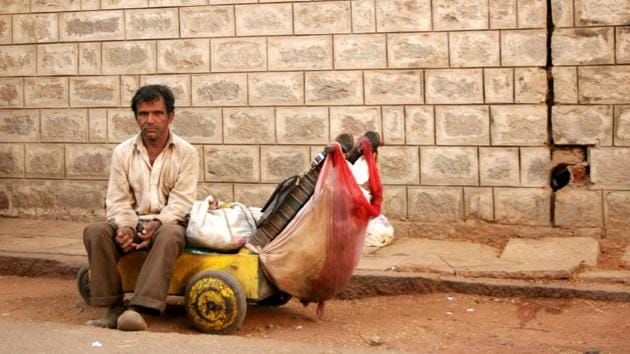India world’s leprosy epicentre, despite its ‘elimination’ in 2005
Leprosy cases with severe deformities have increased by 50% increase in the past six years, indicating that many cases of the curable disease are being detected late. This rising trend of late diognosis is a cause for concern, especially after the government had declared leprosy had been eliminated from India in 2005. WHO norms say leprosy is eliminated if the prevalence of the disease is less than one case per 10,000 people.
Leprosy cases with severe deformities have increased by 50% increase in the past six years, indicating that many cases of the curable disease are being detected late. This rising trend of late diagnosis is a cause for concern, especially after the government had declared leprosy had been eliminated from India in 2005. WHO norms say leprosy is eliminated if the prevalence of the disease is less than one case per 10,000 people.

The figures released by the government-run National Leprosy Eradication Programme show that 5,851 leprosy cases with ‘grade 2’ disabilities were detected between 2015-2016 as compared to 3,865 in 2011-2012. Grade 2 disabilities refer to the presence of visible and often permanent deformities caused by damage to the patient’s ‘peripheral nervous system’, which excludes nerves in the brain and the spinal cord. These deformities, for example, include muscle damage in the fingers, toes and visual impairment, which affect basic day-to-day activities such as holding objects, wearing slippers, cooking and typing.
“A patient with leprosy develops severe disabilities only if the condition is left untreated for at least two years from the time of infection,” said Dr Vivek Pai of the Bombay Leprosy Project, a city-based non-governmental organisation, which sees almost 40 referrals in a month. “Managing a leprosy case once the deformity has set in is certainly not easy. The damage sometimes is irreversible.”
Dr Poonam Khetrapal Singh, World Health Organisation (WHO) regional director for South-East Asia, in a statement on World Leprosy Day — January 29 — said, “Disabilities do not occur overnight, but happen after a prolonged period of undiagnosed disease. Early detection is key to achieving this target, alongside scaling up interventions to prevent leprosy transmission.”
According to the WHO, 60% of the 2,12,000 people detected with leprosy globally in 2015 were from India. WHO norms say leprosy is eliminated if the prevalence of the disease is less than one case per 10,000 population. In 2005, India achieved statistical elimination of leprosy with a national prevalence rate of 0.96. The prevalence rate declined to 0.66 in 2015-16. The next step is eradicating the disease, when not a single case is reported.
Recognising the need to find leprosy cases in India, the government in 2016 conducted a massive door-to-door survey between September and October. The survey covered a population of 360 million people and reported 31,666 new cases, including 3,755 among children.
Although the survey has brought these cases to light, experts say leprosy cases could be underreported owing to major shortfalls in the implementation of screening methodologies. “At the ground level, when a health worker examines people, they show pictures of leprosy and ask people if they have the condition and look for deformities,” said Dr Vinaja Shetty, consultant with the Foundation of Medical Research, Worli. “If a patient in the early stage of the infection, who has a lesion on his or her back or stomach, is definitely not going to get reported. So, only cases where the deformity has set in come to light,” she added.
Lack of awareness and fear of social stigma, too, prevent people from reporting their condition, said Shetty.
Physical screening of people during the surveys must be made mandatory in the screening protocols to detect cases early and prevent disabilities, doctors said. “The important indicators of prevalence of leprosy are children being detected with it and high numbers of disability cases. This means cases are undetected for long. An exhaustive and not a superficial examination is going to bring out more cases,” said Dr Chitra Nayak, head of dermatology department, BYL Nair Hospital, Mumbai.
Anil Kumar, deputy general (leprosy), health and family welfare department, said that the efforts to detect cases early are on. “According to the guidelines, for every household, a male and a female worker have to be present to conduct a physical examination. The people being screened should be in minimal clothing. We will continue the screening programme in the coming years,” he said.
Get Current Updates on India News, Lok Sabha Election 2024 live, Elections 2024, Election 2024 Date along with Latest News and Top Headlines from India and around the world.



